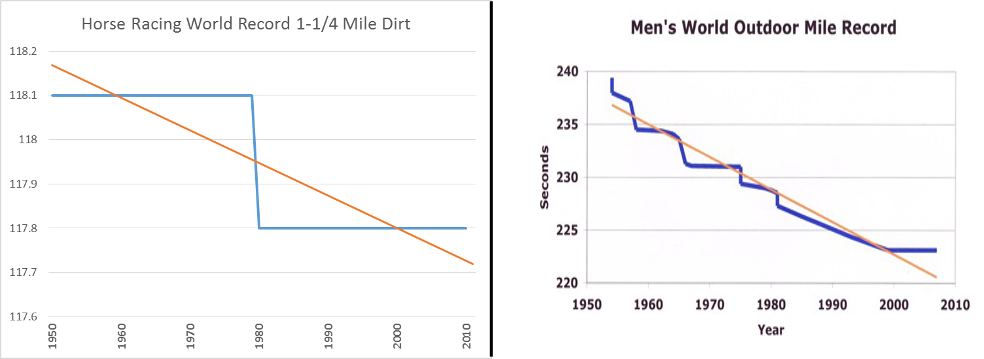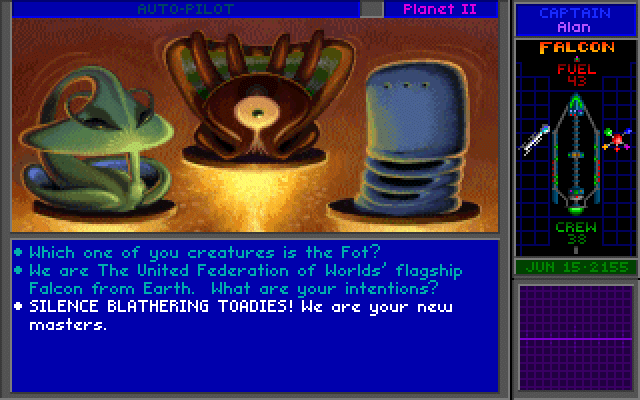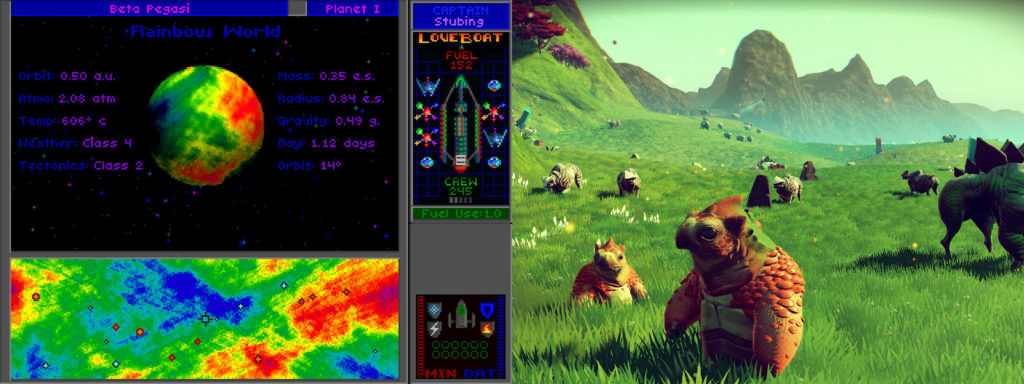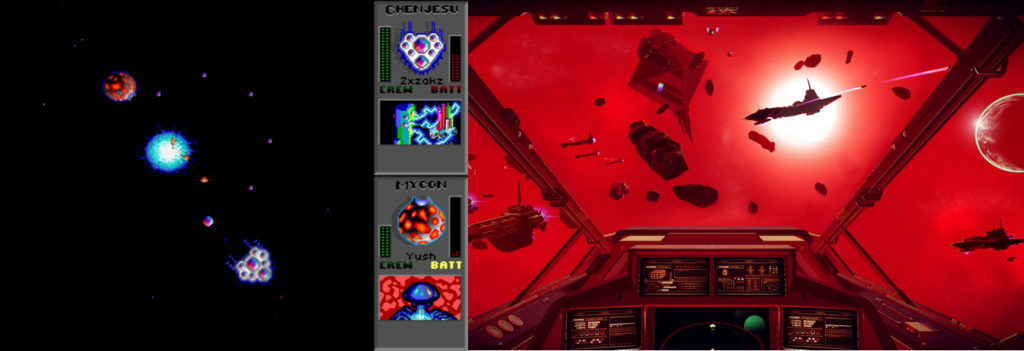Posted on October 26, 2017
Best Reddit Yet…
Ok, I’ve only posted to reddit a couple of times, but this one will be my favorite for probably forever I expect…
I posted this thread on reddit asking about an MP3 song I’ve had lying around since college, or shortly thereafter (1997? 98? 99?).
It’s on the “Name That Song” subreddit because I wasn’t sure I had the name of the artist or the song correct. I’d transcribed the lyrics, searched the internet as best I could (and I generally consider myself fairly adept at that), and finally resorted to posting to reddit.
A few weeks go by… crickets. No comments; just a few views.
Until I woke up this morning to not only a comment on the thread, but an email from the comment-writer, who was none other than the original artist, excited to have googled himself and found me posting about a song he wrote 20 years ago!
Made his day, and it made mine too. It’s a fun little thread; check it out. Good times.
Posted on August 20, 2017
Quick Management Maxims For Doing Things Well
I like boiling things down to useful maxims. It’s not always appropriate. The world is more complicated than one liners. But sometimes it’s useful to have these things, to focus one’s philosophy. Here’s a few.
Lead the way and Clear the way
I was asked a while ago for my management philosophy. This is as concise as I can get… good managers “lead the way, and clear the way”. Just about everything boils up to this. How to treat people, how to organize, how to drive a vision and execution; how to implement best practices… all boil down to having a path, setting people on it, and making sure they don’t get pushed or pulled off of it.
Plan to do everything a thousand million times
It’s fun to watch the modern “Six-Sigma”, “CMMI”, “Agile”, “DevOps”, “No-Ops” transitions (with a million more little steps in there). Are those things all equivalent? No, of course not. But they’re on a long spectrum that has been going on since we decided to invent wheels and farming. All of human history has been about making things easier to do, really. In software land this is all about automation, and the way to know you’re doing that right is to imagine you have to do the same task a LOT. Millions of times. This helps focus ease, simplicity, performance tuning, documentation, architecture, … everything.
The Golden Rule – Plus Perspective
They teach you the “Golden Rule” pretty early as a kid. Treat others the way you’d want to be treated. But I think it’s just one step shy of ideal… you need to understand the perspective of the other person. Maybe they don’t want to be treated the way you do? Diverse teams are difficult to manage, but an easy way to fail is to treat people like they’re all the same. Even well intentioned, treating people like you want to be treated is a mistake. It’s the best _starting point_. But then you must learn their perspective, and, where reasonable, accommodate it.
Align Ownership with Accountability
This seems simple, but it’s another one of those things that many teams just don’t harmonize on, aggravating managers and employees. If you’re in charge of something, own it – successes and failures, no matter how many people you direct to help. If you delegate, delegate the decision making as well as the glory… or fallout. Think of the military here — train people; expect what you want from them. Avoid micromanaging… hobbling people’s autonomy, or undermining their successes. Let people be creative when they can, but make clear their constraints early. Quick iterations work well for this so you can always have touch-points and chances to redirect. Matrixed management organizations make this difficult… it’s easy to have “too many cooks” floating around and people unclear of their objectives or unable to take credit (or blame) for their work.
I’ll add more as I come up with them…
Posted on March 13, 2017
Greedy Test Case Algorithm in a SQL Stored Proc
Here’s a straightforward problem: I have a table with a lot of fields in it (in this case, several tables — new Fact and Dimension tables in a star schema data warehouse, but, you know, any wide table will do).
I want to extract a few real world test records that exercise the entire table… a “covering set” of test cases… so if I have 100 columns, and record A has non-zero, non-null values in columns 1-50 and record B has good values in columns 51-100, then I only need to test those two records. How great is that?!
Ok, I should probably BUILD test cases, but I like using real data since there are always unseen business rules lurking about. Anyway, this is a pretty basic math problem: Select the minimal number of objects from the set of rows where the union of the viable (non-null, non-zero) columns across the subset covers all possible columns.
There’s some code below. Â Note that it is very bad code. Â I use the wrong scope on global temporary tables, I don’t do lots of checking of things, I generate SQL and execute it, I debug with print statements. Â It is also formatted poorly, but that’s actually more of a wordpress/plugin issue than anything else.
But it’s mine, and I love it…
Posted on August 23, 2016
Horses and Olympians and Data and Such
I pick on Aaron Carroll a lot, and it’s really not that he deserves picking on, it’s in fact because he writes so much good stuff that I like that I am compelled to investigate at length.  Fortunately this time he actually asked for comments, so here we are…
He recently posted a simple question (itself based upon a piece by Ben Rosen):  “Why are people getting so much faster, but not horses?” on The Incidental Economist blog, which you should read (the post, the site, all of it).
It has two pretty charts , and otherwise it’s very short.  But he asks for an answer to the question.  First, the charts… one depicting the wining Kentucky Derby time over 60ish years and the next depicting the world record human 1-Mile running record:
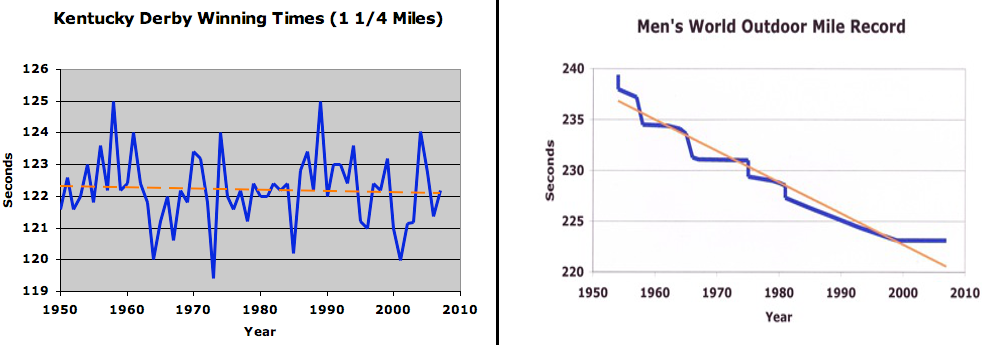
Charts from Ben Rosen
So, without the raw number or validating the trend lines, sure… the chart on the left shows a pretty even-keel trend (note the axis labels — the deviation is less than 5%, even though it looks spikey), while the one on the right shows a clearly, quickly, decreasing line.
Of course, the error is easy to spot, and I’m sure Aaron was being coy about it… you can’t compare best times at one race against a world record history. Â The right hand chart is NECESSARILY going to go down all the time. Â It would be astounding if the left hand chart did… if every single race beat the best time of the previous race. Â And remember, the right hand chart is the aggregation of hundreds, possibly thousands of races competing for that best race. Â It’s apples to oranges, and that explanation fits in a tweet:
@aaronecarroll I’m guessing breeding vs. training, but comparing a monotonically decreasing record to best times in one race is misleading.
— Chip Lynch (@chipmonkey75) August 22, 2016
Right, right, “monotonically decreasing” because world record times vs. one race is the core issue… “But wait!” I can hear you all gasp, in the back of your minds, why throw in the bit about training and breeding?
See, the reason this deserves more than a tweet, and thus the deep dive blog post, is that just because the charts used to ask a question were bad doesn’t mean the original question _itself_ was bad, and certainly we haven’t answered it. The answer to “why are humans improving faster than horses” is not “your charts don’t match”. Â It’s just the charts don’t prove the premise (that people ARE improving faster than horses), so we have to go back and look at it a bit first. Â (NB: I think they might be, thus the breeding vs. training comment, but we’ll come back to that).
To check the underlying assumption, we have to look at world-record times for horses. And that takes a bit of digging. The Guinness World Record people keep track of the “Fastest Race Horse“, but there’s no easily accessible history. Â And the horse-racing statistics site Equibase has a page of about 75 record times (combinations of different length horce races on dirt, turf, and all-weather tracks), but again these are only the current record holders.
But it’s a good starting point. Â The Kentucky Derby is a 1-1/4 mile dirt track. Â It turns out that the world record for a 1-1/4 mile horse run was NEVER set there (as far as I can tell)… the three records I can find are:
- Spectacular Bid ran 1:57.8 (117.8 seconds) on Feb. 3, 1980 at Santa Anita Park
- Noor ran it in 1:58.1 (118.1 seconds) on June 20, 1950Â “beating the prior record by 1.6 seconds” meaning…
- someone ran it in 1:59.8 (119.8 seconds)… sometime (Coaltown matched this in 1949, but the record had already been set)
Ok, so that’s not much data and it was hard to find. Â I’m searching for a better set of world record horse racing data, but for now at least we can compare a chart in Excel because why not!
Hey look! Â Our trendlines nearly match! Â Horses HAVE been improving just like people have, right?! Â Excellent, case closed, let’s go home.
Except, of course, it’s not that easy either. Â These scales aren’t remotely similar (the left hand chart is eggregious, but both of them are misleading in order to fill in the space with an arbitrary y-axis) and of course the left hand side is based on exactly two points (note that the trendline is NOT the line between the two points… this is some of the oddity of evaluating a world record trend, since the data points for subsequent years are really imputed).
UPDATE – TWEET FROM AARON:
@chipmonkey75 Come on. That’s lying with charts. Horse times improved less than a second once in fifty years.
— Aaron E. Carroll (@aaronecarroll) August 23, 2016
But… but… right, but…Â the original chart… I mean… that was kind of my p…. oh, never mind.
Anyway, at this point, we’re going to need more data and to come up with a method of comparing the base premise… it’s easy to say that since a horse record was broken once in 50 years and a human record 10 times or so (I’m counting inflection points), that the idea that humans are improving faster is valid, it’s far from a rigorous statistical analysis. Â Is one incident at one distance, or one-second in 120 vs 15 from 240 THAT different? Â As mentioned before, there are dozens of horse race distances and categories, and the same goes for human records — is the mile an outlier? Â Do records get beaten as frequently and to the same degree in the 100-meter? Â In the half- and full-marathons?
I mean, it seems like it… from this limited data, I just think we should be more careful taking it for granted.  Still, I stand by my point that breeding plus classic training, which would have shown benefits a hundred plus years ago in horses, beats out modern training which has only recently become the massively streamlined situation it is today.  Sure people are physically changing too, and we may yet start engineering people for their speed, but for now, well…
let me see if I can dig up some data and maybe we’ll write a part 2…
Update update: I’m probably not going to get any more data, and since I think I wasn’t on the same page as the original post I’ll just bow out quietly without starting much more of a row, and point my reader (s?) to Stephen Few’s blog, where we can discuss visualizing data best practices (like zero-axis bases and similar scales) a bit better (and who, similar to Mr. Carroll, I pick on sometimes mostly because I like his writing and agree with him so much of the time).
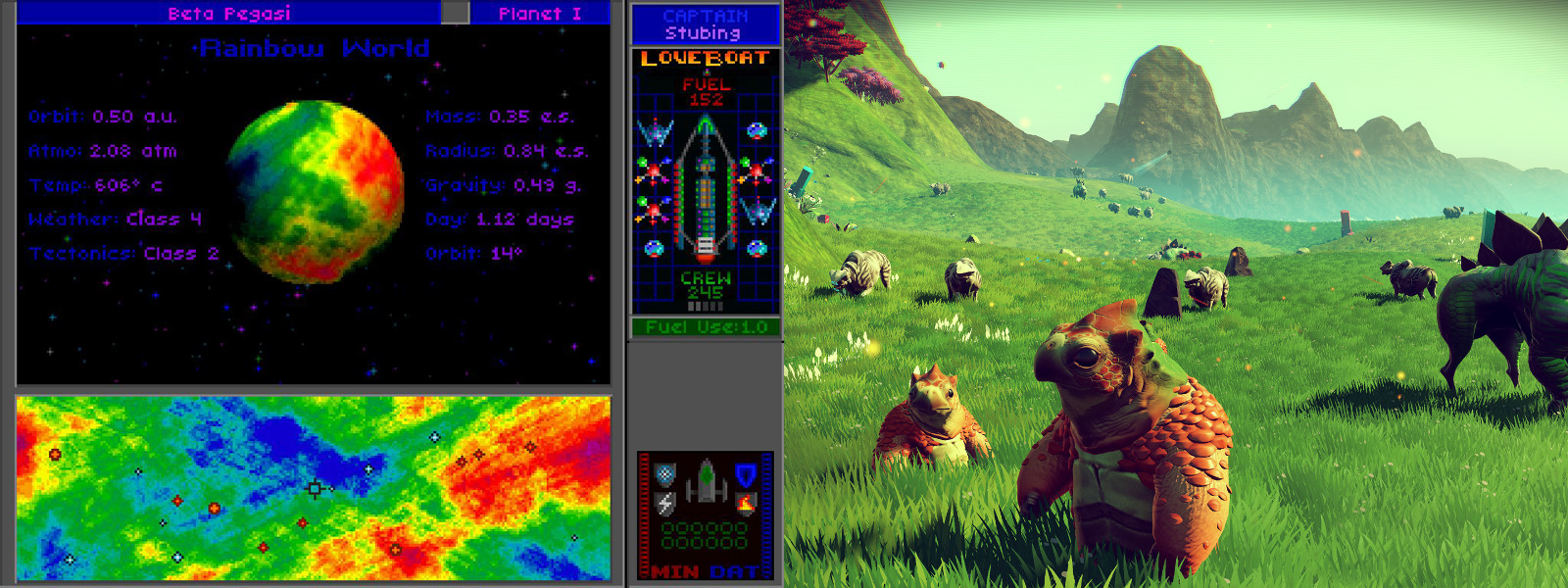
Posted on August 17, 2016
No Man’s Sky – Finally! Nearly as good as Star Control II
I’ve long been on record (well, I’ve long said it I promise) that my favorite game ever is still Star Control II, and I’ve been waiting for a game to recapture what I loved about it. (You can download the “Ur-Quan Masters” for free — a 100% original code port of Star Control II; go spend a few days playing it after you read this)
No Man’s Sky isn’t QUITE going to replace what I loved about SCII, but it comes as close as anything has in a long time.
Let’s back up. Â Star Control II is a space exploration game with a huge number of stars and planets. Â The first time I played it, I found out that, if you dilly-dally and just wander around searching all the stars, rather than following hints and clues left by chance alien encounters and random artifacts found on planets, that you will surely die, having lost the game after, say, 72 hours of painstaking gameplay, since the main story arc of the universe continues, whether or not you’re paying attention. Â Even after rolling back to a save game from 12 or 24 hours prior to dying my first game was unsalvageable — I had to restart.
No Man’s Sky doesn’t seem to do that to you. Â But you DO have a sense that the universe is still chugging along while you hop from system to system and planet to planet. Â And, while I haven’t finished it after, say, 10 hours of gameplay, NMS DOES seem to have a compelling story arc, AND it lets you literally just while away your time throughout a nearly endless universe.
And that’s pretty much all you do.
And it’s pretty cool.
And some people agree with me!
Yes, there are aliens and outposts EVERYWHERE — some nicer than others — some humanoid, some not, some apparently androids… none of the planets feel truly “undiscovered”.  Other similarities include animals and plants and mining and sentries and artifacts and languages you have to learn and upgrades and mysteries that you may never uncover and lots of awesomesauce.  Except NMS has 20 years of improved technology behind it, compared to SCII, and a cutting edge planetary generator that is pretty awesome, even if some people expected better.
Star Control II made me want to get into video game programming more than any other game. Â Sure I’d already written a (horrible) asteroids clone back in high school (some day I’ll find the source code for that… it’s on one of these floppies… somewhere). Â But SCII was the most balanced game I’d seen and it was simply enough made that it looked approachable. Â I’d spent time studying the 3D modeling in doom and figured it wasn’t worth my time… by the time I got an animated cube spinning in front of me, I tired of the matrix manipulation and the constant bounds checking and accidental inversions that plagued that sort of development at the time. Â Now, of course, you can just describe a polyhedra and send it to a GPU, but at the time the math hadn’t been built into silicon. Â Trust me, it was daunting.
NMS takes the procedurally generated plasmas that SCII made so easy and succesfully DOES leverage that modern hardware to pull them into the 3D world. Â And it’s gorgeous.
The “randomness” of the worlds isn’t very high.  The important parts boil down to a few things:  How hospitable is the planet (temperature and toxicity), how much flora and fauna there are, and how angry the local aliens are.  The rest is straight landscape… water, land, and caves make up a pretty reliable system, but there’s not REALLY a lot of noteworthy variety, at least not yet.  People have complained about gorgeous but repetitive color schemes and easy-to-get-lost-in caves due to the lack of real on-planet variety.  But these are complaints when compared against hand-crafted easy-to-navigate arenas people have been weaned on in video games.  It actually IS easy to get lost in a cave or in a forest IRL (actually, I have yet to encounter anything forest-like in NMS, but others have, so I’ll see).
These are all trade-offs I’m willing to take for the vast expanse of the universe.  Of note, many people are complaining about it crashing a lot… that absolutely would bother me… but on my ancient gaming rig (the case is, what, at least 15 years old — the GPU over 3), it runs just under 1080p, looks great, and doesn’t hiccup at all (if you don’t count how the procedurally generated landscapes come to visibility… but that seems to happen with everyone).
There are other complaints floating around that don’t bother me.  A fairly restrictive inventory and upgrade path for your suit, ship, and handheld-mining-tool (gun), which doesn’t bother me at all… compare this to say, EVE Online, which took it to the other extreme and I far prefer the NMS version.  Space combat isn’t “all that”… well, yes, I agree, but it’s not a space comat game.  SC2 had fun combat, but it was of the cheap-arcade easy-to-master style that was more like a fun android game.  Elite: Dangerous is the go-to space battle game now, right?  Meh… I only wish I could run away from fights, but even losing your spaceship isn’t so bad in NMS, as you get popped to the nearest space station with a brand new one awaiting you.  For combat I miss X-Wing vs. Tie Fighter and Wing Commander.
Other games have other mixtures of these basic elements that I love… Mass Effect was a pretty good spiritual relative of SCII, but it wasn’t a clear hit for me… the game play was too linear, although you did have the sense of the impending lose-everything ending, but the openness was really an illusion. Â There are myriad others that try certain aspects… Sins of a Solar Empire, Kerbal Space Program, anything Star Wars or Star Trek related… but nothing hits quite right.
And No Man’s Sky still doesn’t. Â But it’s close. Â Very very close, and it’s easily worth my first-run money (a rarity). Â I expect to be disappointed when the very loose “Atlas” story line is exhausted, but who knows. Â And maybe they’ll add other story lines in over time that are more universe-shattering? Â I doubt there will be a game again that you can actually, you know… LOSE, at least not of this caliber, but for now I’m engrossed in an infinite-as-necessary universe…
and I’m having a grand time.

